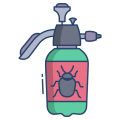Blog
Free of Gluten

What is Gluten?
Although gluten is commonly thought of as a single compound, it is actually a combination of proteins found in cereal grains including wheat, barley, rye and oats. Gluten is composed of two classes of proteins, gliadins and glutenins, each accounting for 50% of gluten’s composition. Gluten has elastic and adhesive properties which give dough its elasticity, helping it rise whilst keeping its shape, and leaving the final product with a chewy texture. These properties and its relatively low cost are the reasons why gluten is so widely used in food and non-food products.
Does Gluten Present Any Health Risks To Humans?
Gluten can trigger adverse inflammatory, immunological, and autoimmune reactions in some people. It can produce a broad spectrum of related disorders, including celiac disease in 1-2% of the general population, non-celiac gluten sensitivity in 6-10% of the general population, dermatitis, asthma, gluten ataxia (loss of fine control of voluntary movements) and other neurological disorders. All of these disorders are treated by placing the patient on a gluten-free diet. Some studies have found that topical applications of gluten can also trigger adverse reactions in some people. In a large Japanese study in which data was collected from 2009 – 2013, a significant number of subjects reported allergic reactions to a soap containing hydrolyzed wheat protein. Other studies correlate asthma in hairdressers who have been exposed to shampoos, conditioners and hairsprays containing hydrolyzed wheat protein.
Is Gluten Used in Cosmetic and Personal Care Products?
Owing to its elastic and adhesive properties, gluten is used in many cosmetic and personal care products including shampoo, lipstick, facial cleaners, lotions, shaving gels, hair sprays and soaps. Since upwards of 10% of the general population suffers from gluten sensitivity to some degree, savvy consumers now screen the labeling of cosmetic and personal care products for the presence of gluten in some form. Because ingredient listings may not clearly indicate the presence of gluten either as an ingredient or as being part of another ingredient, consumers are becoming more dependent upon selecting products which are labeled as being “Gluten-Free”.
Making “Gluten-Free” Label Claims
“Free-of” claims that are made for food, drug and cosmetic/personal care products are regulated both by the FDA and FTC (Federal Trade Commission). Laboratory testing is required in support of such claims. In order to make a “Gluten-Free” claim for a food product sold in the US, lab testing must confirm that the product contains less than 20 parts per million (ppm) of gluten. Although there currently is no established standard for making a “Gluten-Free” claim for topical products, many manufacturers employ the food standard (less than 20 ppm) as the basis for making their claims.
How is Low-Level Gluten Testing Conducted?
Lab testing for low levels of gluten in food, cosmetic and personal care products requires methodology that is sensitive, specific, and accurate. Since gluten is a complex mixture of proteins, chromatographic techniques (HPLC, UPLC and GC) are not very useful for this application. The most common analytical techniques used for testing low levels of gluten in any type of product are Enzyme-Linked Immunosorbent Assays (ELISAs). When executed by skilled technicians, ELISA methods are capable of determining gluten levels in the ppm range.

 Admin Register
Admin Register

 Alcohol
Alcohol  Baby Care
Baby Care  Bakery, Cakes & Dairy
Bakery, Cakes & Dairy  Beauty-&-Hygiene
Beauty-&-Hygiene  Beverages
Beverages  Cleaning & Household
Cleaning & Household  Construction Materials
Construction Materials  Foodgrains, Oil & Masala
Foodgrains, Oil & Masala  Medicine
Medicine  Medicine Related Cosmetics
Medicine Related Cosmetics  Non-Veg
Non-Veg  Pesticides
Pesticides  Snacks & Branded Foods
Snacks & Branded Foods  Supplement
Supplement  Veterinary
Veterinary 